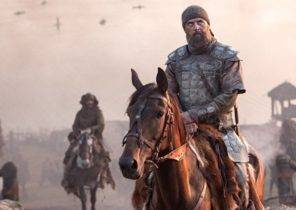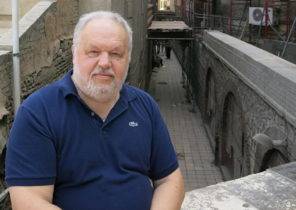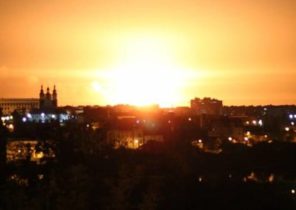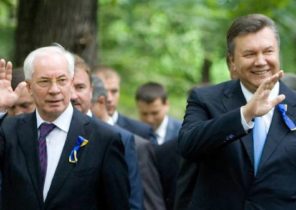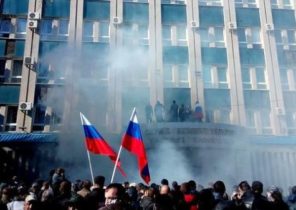
Scrapping the existing economic order began on 8 November 1917 in the then Russian capital Saint-Petersburg, at the time called Petrograd. The night before the government seized the Bolsheviks, the radical wing of the Russian social-Democrats. The first thing the leader of the revolution Vladimir Ilyich Lenin signed a number of decrees, in particular, the “Decree on land”. According to him, the land belonged to the landlords, subject to immediate seizure without compensation. Was banned from selling and buying land and leasing it. This decree began as a giant, and just as deadly experiment: the Bolsheviks took control of all the country’s economy, calling it “socialism.” Ended the experiment only after ‘ 74 — with the collapse of the Soviet Union. However, its effects are still being felt today, both in Russia and in other countries of the former USSR.
This year, the October revolution day marks one hundred years. It started with the coup led to one of the bloodiest tyrannies in human history, was awakened by large — but unfulfilled — hopes and changed all ideas about the economy. The old Marxists and social Democrats like Karl Kautsky (Karl Kautsky) still believed that capitalism itself in one form or another will be reborn into socialism. Lenin, however, simply abolishes the idea itself. The revolutionaries immediately established in Russia weakened the dictatorship of the proletariat. This resulted in the death of millions of people and the disintegration of society.
The reason socialism has become the First world war. It not only led to the loss of power by the Tsar, which Russian society has lost the Foundation of his existence, but also forced people to get used to the economy of the state. Lenin believed that the bourgeoisie is using this state of the economy has created the means by which the “vanguard of the proletariat”, that is, he himself and his companions had only to use to establish their dictatorship. As role models he served the German Imperial mail, and the German war economy.
The bourgeoisie is easier control over the economy, he wrote. In his words, “the mind, control over it is simplified by capitalism to the utmost, to unusually simple, to every competent person of accessible operations of supervision and record, knowledge of four actions of arithmetic, and issuing appropriate receipts”. So armed workers, in his opinion, was quite able to manage the economy. “The whole society becomes Bureau and factory with equal work and equal pay,” he wrote in 1919. Fatal misconception that under the economy is just bureaucratic control, and the neglect of creative activity was accompanied by Soviet socialism to the very end. In addition, socialism has never been able to hide that its roots left in the war. This was evident even during the legendary “battle for the harvest” in the former GDR.
The struggle with the peasantry: the workers seized corn, potatoes and cattle
In the spring of 1918 Russia was only on the threshold of a socialist tragedy. Across the country, uprisings and strikes against the Bolshevik dictatorship. The civil war began, during which both sides — the “red” and “white” I acted extremely brutally. To survive, the Bolsheviks were forced to impose economic dictatorship known in history as “war communism”. Was created by the Supreme Council of national economy. Come under the ban of private property and trade. However, the real power belonged not to the Council of national economy, and the all-Russian extraordinary Commission for combating counterrevolution and sabotage. This secret police earned notoriety under the acronym Cheka (later the GPU).
In practice, however, war communism turned into a war against the Russian peasants — as well as small. Armed workers and soldiers confiscated their grain, potatoes and livestock. Most of the confiscated goods went to the state, and part took possession of the so-called “suppliers”. “The civil war rested on the bread. (…) Long live civil war,” wrote Russian revolutionary and founder of the red army Leon Trotsky.
Civil war, war communism and the “red terror” (officially called the actions of the Cheka) had terrible consequences. According to the most optimistic estimates, the “red terror” killed 280 thousand people. The ravaged land, the famine broke out, the ruble was virtually destroyed by hyperinflation. Industrial production fell in comparison with 1913 ten times. Although the Bolsheviks won the civil war, had no idea how to feed the population.
In this desperate situation, Lenin ordered an abrupt change of course. In March 1921 the tenth Congress of the Communist party, he proclaimed the New economic policy (NEP). However, the “red terror” continued, but in the economy, the Bolsheviks began to allow some freedom to merchants and peasants again were allowed to make a profit, and confiscation of property from the peasants ceased. The NEP was something similar to the reform of the Chinese Communists after the death of Mao Zedong: small capitalism was allowed, but the party still commanded the economy. With this little bit of market economy the lives of ordinary people has improved somewhat.
However, in reality the NEP was only a small “respite” in the war of the Communists against the companies. After Lenin’s death in 1924, the General Secretary of the Communist party (now called themselves Bolsheviks) Joseph Stalin managed to take all the power into their own hands. He forced his opponent Trotsky to flee the country, and in April of 1929 announced the first five years. Thus began the present phase of the planned economy. A special Agency called the “Gosplan” was supposed to manage the economy of the country down to the smallest detail. In addition, Stalin launched a new campaign against the peasants. They were ordered to hand over all surplus of the economy in the state that went into industrialization. To ensure receipt of these excess, farmers were forced to join collective farms.
At the same time Stalin declared the fight against the so-called “kulaks” — wealthy peasants, which he often spoke, was to be “destroyed as a class”. The result of this policy was the famine in Ukraine. According to the Ukrainian Academy of Sciences, killing about three and a half million people. The British Explorer Richard Conquest (Richard Conquest) counted, however, as many as 14 and a half million victims. The memory of this disaster still overshadows relations between Russia and Ukraine.
After the death of Stalin in 1953, repression in the Soviet Union and neighbouring countries have become less cruel, but five remained part of the lives of Soviet citizens to the disintegration of the country. The collapse of socialism was “programmed” initially. Why will turn out exactly economists Fridrich von Hayek (Friedrich A. Von Hayek), and Ludwig von Mises (Ludwig von Mises) explained in 1930-ies during the famous dispute with the Polish socialist Oskar Lange (Oskar Lange) about the economic policies: if market pricing is “off”, then the drafters of the plan will have no tools to decide what actions are rational and which are not. “The wheels will spin, but in vain,” wrote Mises. That’s exactly what happened, and can confirm everyone who have found the economy of the GDR. This element of confiscation never disappeared from the socialist practices. Plans, as a rule, was associated with the war for resources between the leadership of the planning Department and the Directors of socialist enterprises.
Workers had to pay for dreams of great power, high salaries they did not get
Actually, this raises the question: why this system did not collapse much earlier? Or, as formulated by the economist for those of you who Olson (Mancur Olson): that the planned economy had nothing to do with the real needs of consumers, and that it was highly inefficient, not necessary to argue. “But she was able to function quite effectively in order to create a superpower to keep it afloat?” The response of Olson is that the Communists suppressed and subjugated the whole society. So they had the opportunity to use a large part of the GDP for investment purposes and, accordingly, a smaller part to put on to satisfy the purposes of the workers — in contrast to countries with free elections.
Thus, in the short term, they managed to achieve fantastic growth rates, to build steel mills, to create a nuclear bomb and launch satellites into space. As the economy as a whole was unproductive, low wage workers have become an unavoidable consequence.
To protest against this work could not — they had no right to strike. When they dared it, in Poland, Hungary and Czechoslovakia, and repression waned shortly to a huge investment came to an end. The Soviet Union and its satellite countries have completely exhausted our own resources. Or, as one Polish worker: “the Communists pretend to pay us and we pretend to work”. Soon after the socialism collapsed.
Today memories about the economic legacy of the October revolution faded. In Russia the nationalists with nostalgia for the Soviet era. In the context of the history of the GDR a lot of talk — rightly — about their security (“Stasi”), but about the collapse of the planned economy, almost nobody speaks. Many also dream due to the social inequality under capitalism — of a “better” socialism. Market economy and free trade on all sides under attack. Perhaps memories of the October revolution will be a good occasion to remind at the same time that a planned economy is rooted in the war that she could work without persecution, and that has never been a democracy without a market economy.
